5 moments that defined Fred Hollows' legacy
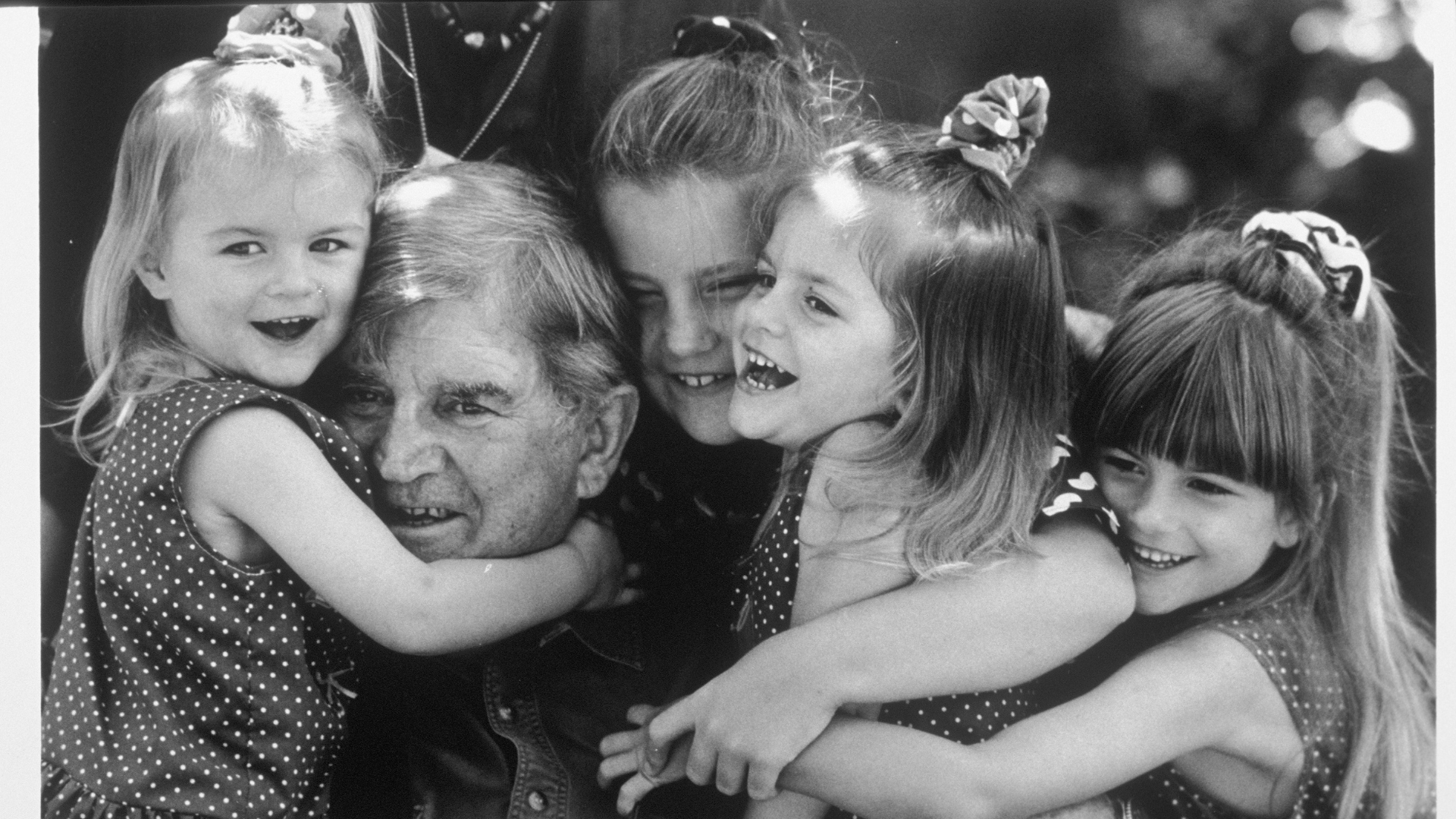
On April 9, my dad, Fred Hollows, would have celebrated his birthday. But if you knew dad, you'd know he wasn’t one for birthday parties. What he cared about was action—fighting for people’s rights and making sure everyone could access quality eye care.
This year, I want to share five powerful moments that defined his legacy and continue to inspire the work of The Fred Hollows Foundation today.
1. Standing Up for Aboriginal and Torres Strait Islander Health
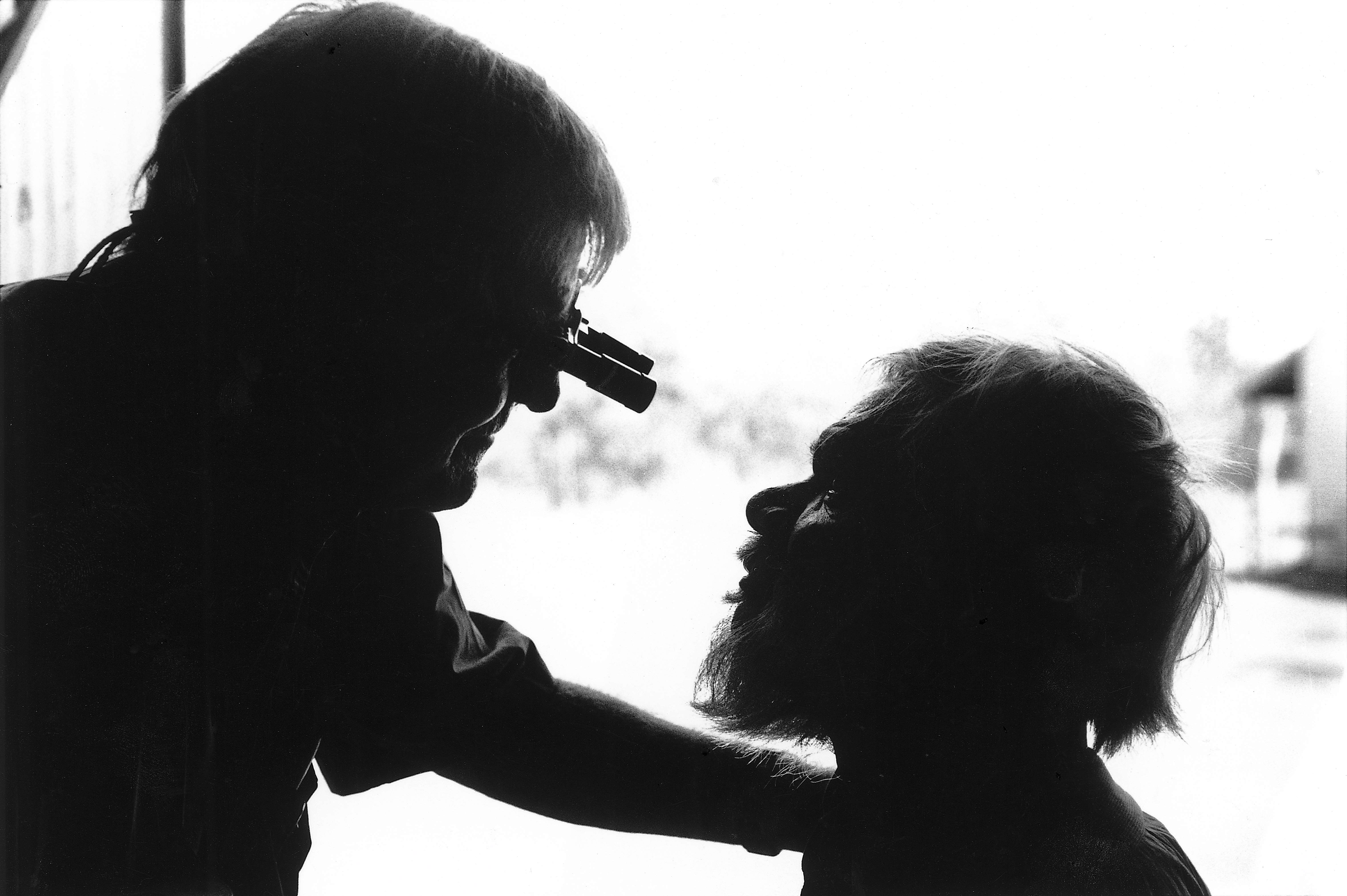
Fred Hollows inspects an Indigenous Australian's eye.
Photo credit: Stephen Ellison
Fred believed that access to healthcare was a basic human right—no matter where you lived or what you earned. In the 1970s, he worked closely with Aboriginal communities, exposing the shocking rates of trachoma and preventable blindness.
As he once said, "As a white doctor, and a man with a conscience, I cannot understand how men in authority can stand by and watch this appalling rate of Aboriginal health problems which would cause a huge outcry if they occurred in the white community."
His work led to the National Trachoma and Eye Health Program, which screened over 100,000 Aboriginal and Torres Strait Islander people, performed 1,000 operations, treated 27,000 people for trachoma and delivered 10,000 pairs of individually prescribed glasses. Today, The Foundation continues his fight to close the eye health gap.
2. Fighting for Equality in Eye Care
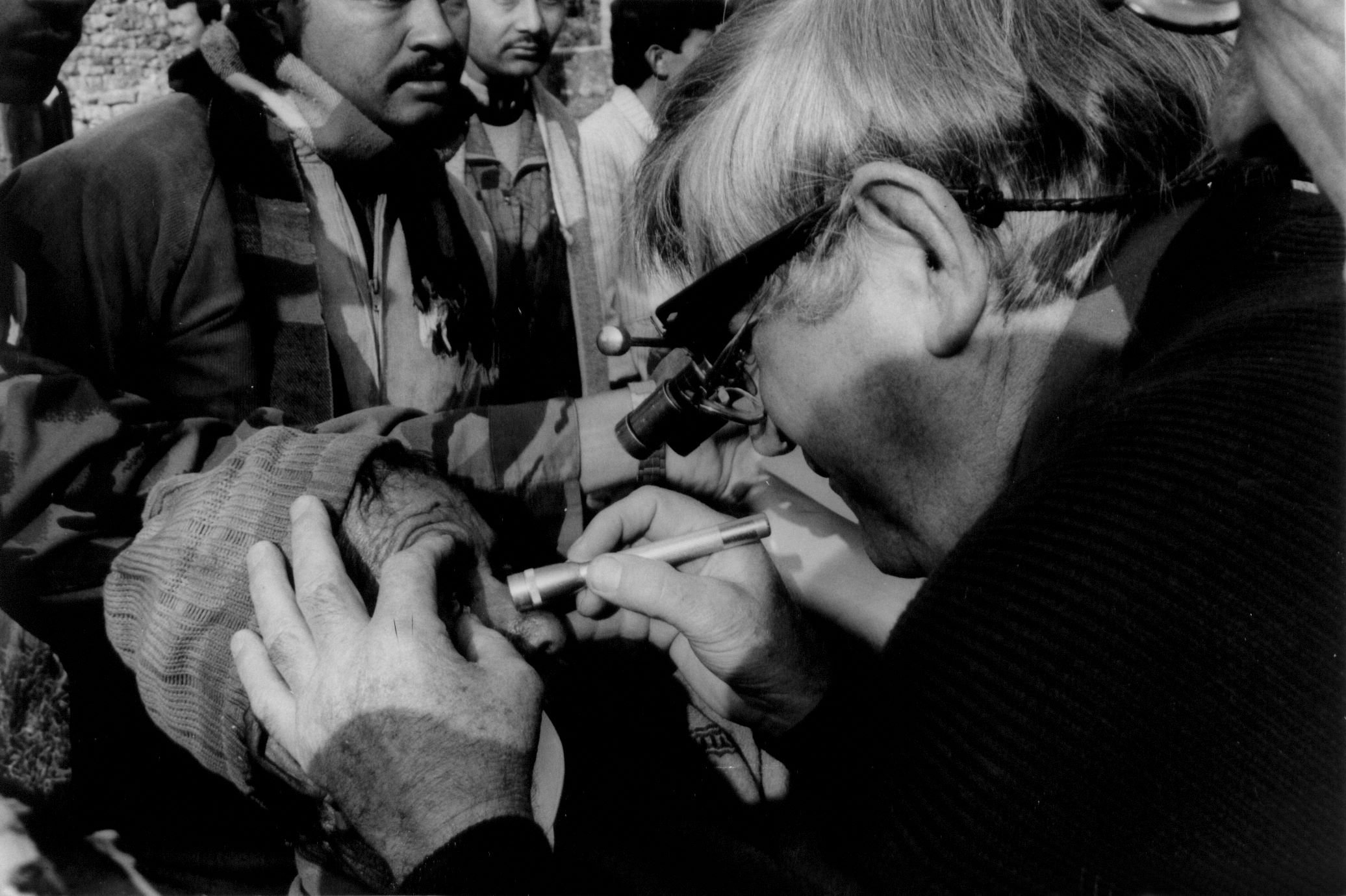
Fred Hollows examines a Nepalese patient following IOL surgery at the NEPA Eye Camp in Tupche, a small village in Nepal.
Photo credit: Jonathan Chester/Extreme Images
Fred was passionate about making eye care accessible for everyone—not just those who could afford it. He believed that "Good eye service is the right of everybody, not just the wealthy who can afford it."
In the 1980s, Fred saw firsthand how poverty prevented millions from accessing life-changing surgery. He refused to accept a world where people went blind simply because they were poor. This belief took him across Africa, Asia, and the Pacific—training local doctors, advocating for affordable eye care, and building sustainable solutions.
He worked tirelessly to break down barriers—whether it was pushing for better healthcare in remote communities or ensuring people in low-income countries had access to essential eye care. His determination helped transform eye health into a global priority, influencing policies and inspiring a new generation of eye surgeons.
Today, The Fred Hollows Foundation continues his fight by working in over 25 countries to deliver affordable treatments and train local eye health workers. In some countries, it still costs as little as $25 to restore someone’s sight—proving that Fred’s vision of equality in eye care is as powerful now as it was then.
3. Challenging the Status Quo

My dad, holding an Australian-made intraocular lens that was used to restore sight for patients in Eritrea in 1991. Three years later, in 1994, my mum, Gabi Hollows, opened The Fred Hollows Intraocular Lens Laboratory in Asmara, Eritrea.
Photo credit: George Fetting
Fred never accepted the idea that things couldn’t change. When he saw that the high cost of intraocular lenses (IOLs) was keeping people in low-income countries from getting cataract surgery, he took action.
Instead of relying on expensive imports, he helped establish factories in Nepal and Eritrea to produce IOLs at a fraction of the cost. This bold move made cataract surgery affordable and accessible for millions.
"I’ve never been anyone’s idea of the smooth doctor type," Fred once joked—but his determination to shake things up continues to change lives today.
4. Teaching the Next Generation
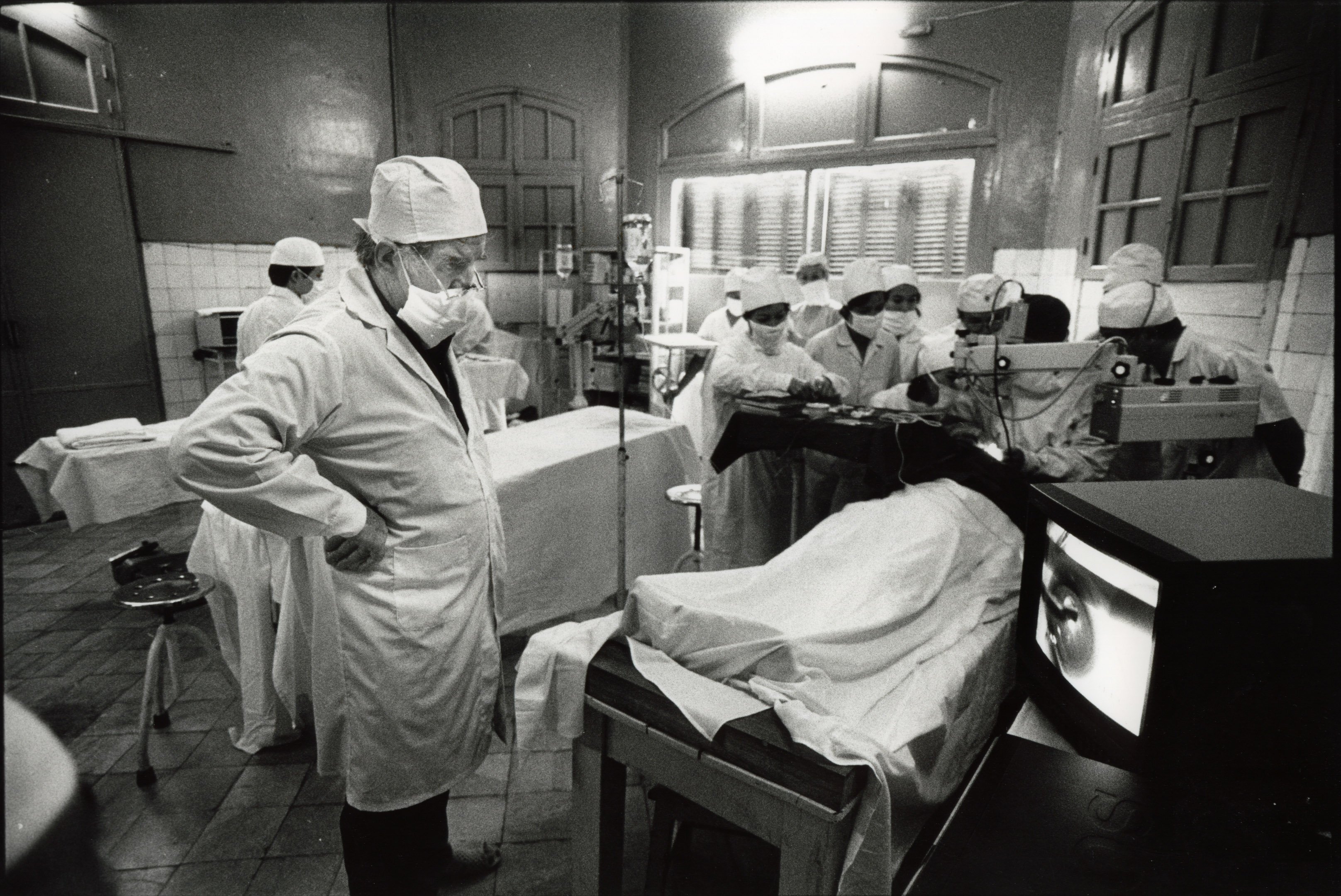
Professor Fred Hollows watches the screen donated to the Institute of Ophthalmology as Vietnamese eye surgeons watch Dr Sanduk Ruit perform a cataract surgery in Hanoi in 1992.
Photo credit: Michael Amendolia
Fred knew that lasting change came from empowering others. Even when he was gravely ill with cancer, he returned to Vietnam to keep a promise—to train local doctors in modern cataract surgery techniques.
In 1992, just six months before he died, Fred helped start the training for more than 300 surgeons in Vietnam. He believed in teaching people to help themselves, famously saying, "Teach the teachers first, then the teachers can teach others."
Today, more than 1,000 Vietnamese surgeons perform around 250,000 cataract surgeries every year—proof that his vision lives on.
5. Carrying Fred's Vision Forward
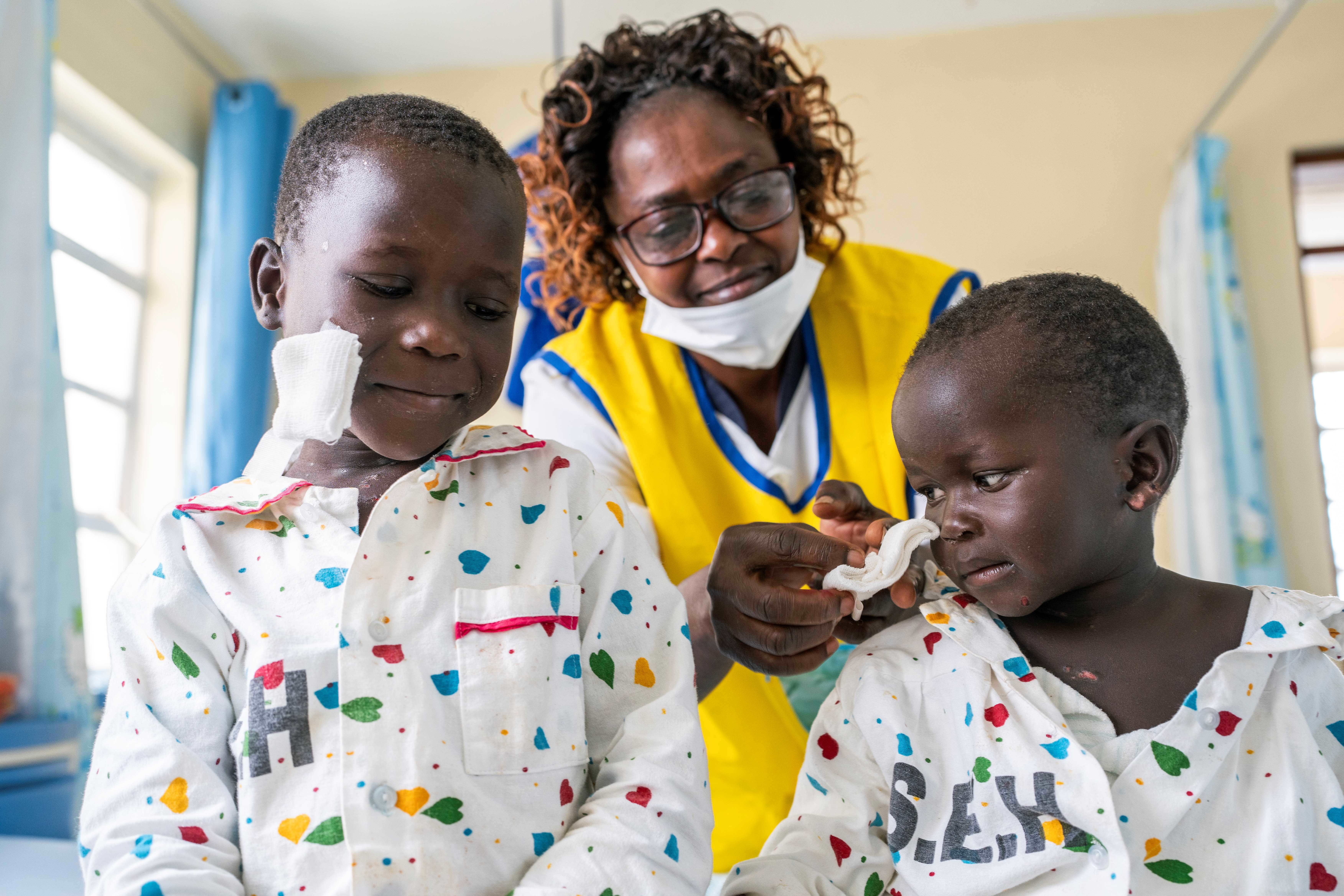
Over 30 years later, The Foundation continues to restore sight in over 25 countries. This photo of Ruth and Vincent is from Siaya, a small village in Kenya. I know Dad would be so proud of how many people we are able to reach, thanks to your support.
Photo credit: Hugh Rutherford
Fred’s fight isn’t over. Right now, 43.3 million people around the world are blind—and 9 out of 10 don’t need to be. Without urgent action, that number could rise to 61 million by 2050.
At The Fred Hollows Foundation, we’re working every day to carry on Fred’s vision—to make sure no one loses their sight just because they can’t afford care.
We train and equip local doctors, nurses, and health workers so that communities can care for themselves long after we’re gone. In remote areas, we reach people who would otherwise be left behind—bringing eye care to their doorsteps through outreach programs and mobile eye camps.
Fred believed in bold ideas that changed lives. That spirit lives on today through innovations like using technology to diagnose eye conditions in rural areas and strengthening health systems to ensure lasting, sustainable care.
Since Fred passed away, The Foundation has restored sight to more than 3 million people. But we’re not stopping there. With your support, we can continue Fred’s work—fighting for a world where no one goes blind needlessly.
If you believe in Fred’s vision, will you help us continue his legacy? It takes as little as $25 help to restore sight in some countries, but the impact lasts a lifetime. Donate here.
Cover image credit: Michael Amendolia
